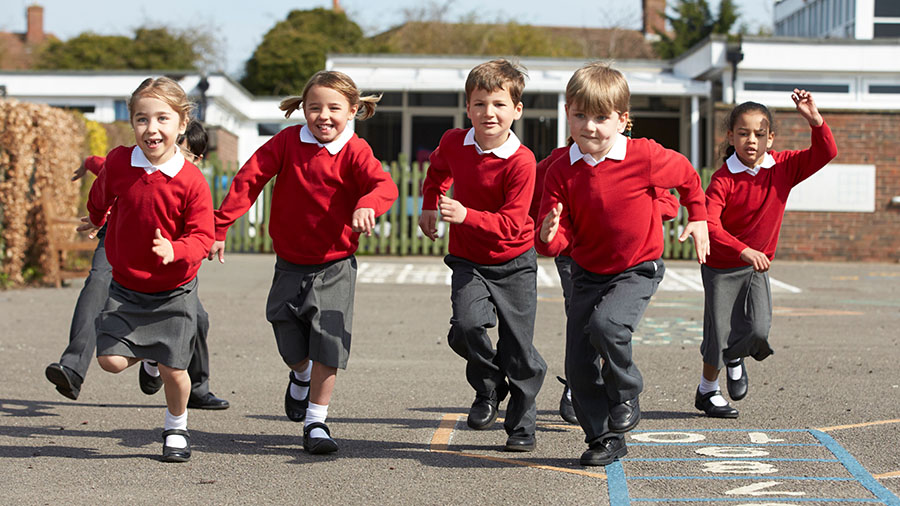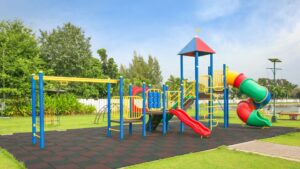A school playground should offer a safe, engaging, and inclusive environment where children can thrive physically, socially, and cognitively. Playground design is integral to promoting essential developmental skills like problem-solving, creativity, and social interaction. Let’s explore the key features that should be included in a school playground to ensure a well-rounded experience for children.
The Importance of Physical Activity in Elementary Schools
Physical activity plays a vital role in enhancing children’s overall well-being. For elementary school students, regular physical exercise is essential for developing motor skills, boosting cognitive function, and improving academic performance. Engaging kids in active play through playground equipment such as climbing structures and swings helps meet the daily physical activity recommendations set by the Centers for Disease Control and Prevention (CDC)—60 minutes of moderate to vigorous physical activity each day.

Key Elements of a School Playground
A well-designed school playground should include the following elements to maximize its developmental benefits:
1. Safety First
The safety of children is paramount when designing playgrounds. Ensuring compliance with national safety standards, certified inspections, and the installation of impact-absorbing surfaces (e.g., rubber mulch or pour-in-place rubber) helps reduce the risk of injuries. Regular maintenance and the use of age-appropriate equipment contribute to a secure play environment.
2. Variety of Play Structures
A variety of play structures supports physical development and encourages social interaction. Popular features such as slides, swings, monkey bars, and balance beams cater to different interests and abilities. Additionally, providing open spaces for group activities and quieter areas for solitary play allows for a well-rounded play experience.
3. Inclusive Design
An inclusive playground is essential to ensuring that all children, regardless of ability, can participate in outdoor activities. Features like wheelchair-accessible ramps, sensory play components, and adaptive swings promote inclusivity, fostering a sense of belonging and empathy among students.
4. Natural Elements
Integrating natural elements into the playground design connects children to the environment and enhances sensory experiences. Trees, plants, and nature-inspired play equipment like log balance beams or rock climbing walls create a more calming and visually appealing atmosphere, which can be both educational and stimulating for children.
5. Site Amenities
Including benches, picnic tables, and shaded areas provides resting spots for students, teachers, and parents. These amenities foster social interaction and offer spaces for relaxation and observation. Well-placed seating enhances the comfort of caregivers while supporting effective supervision.
6. Educational Components
Playgrounds are more than just places to play—they can also be spaces for learning. Incorporating interactive panels, educational games, or outdoor classrooms can stimulate intellectual engagement while promoting physical activity. Thoughtful playground design incorporates elements that support both academic learning and social development.

Planning a New Playground
Creating a new playground requires careful planning, community involvement, and appropriate budgeting. Popular equipment like merry-go-rounds, rock walls, and interactive panels enhance play experiences. Engaging the community in fundraising efforts ensures a sense of ownership and collective support for the project. Consulting with a playground expert can provide valuable insight to ensure that the final design meets the school’s needs and safety standards.
Conclusion: Designing the Ideal School Playground
A well-designed playground is not just a recreational area; it’s a space that nurtures physical, social, and cognitive development. By incorporating safety measures, diverse play structures, inclusive designs, natural elements, and educational components, schools can create an environment that supports every child’s growth and well-being. A thoughtfully designed playground can have lasting positive impacts on students’ health, social skills, and academic success.





